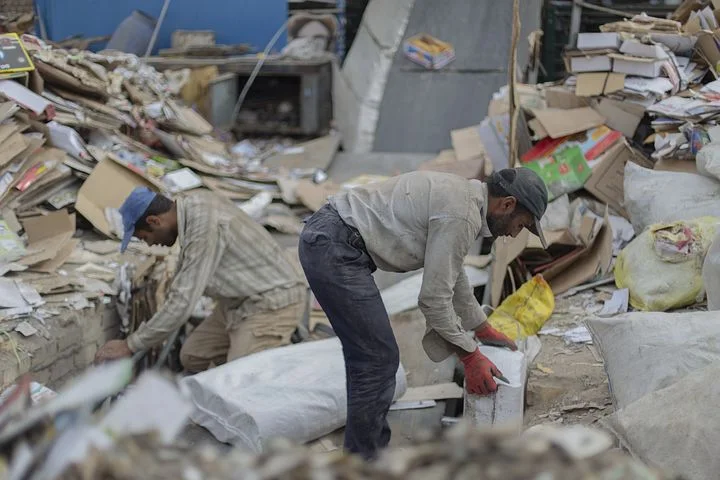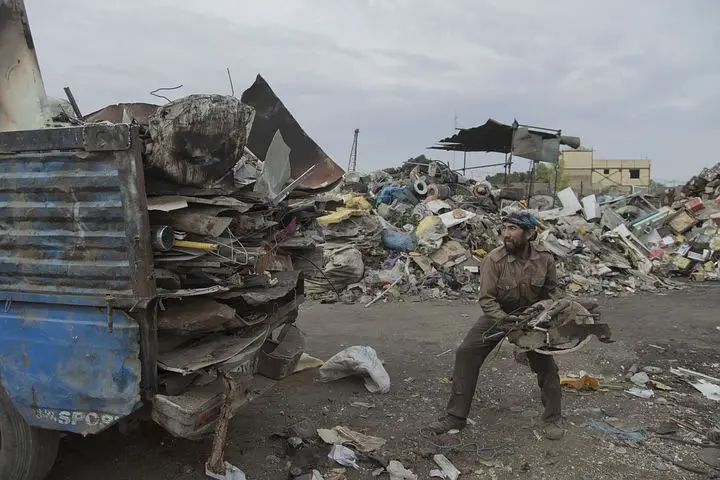A lot of garbage may be produced by businesses, including waste made of paper, plastic, food, and other items, and they are called business wastes. These trash has the potential to harm the environment, increase pollution, and deplete resources. Businesses may improve their financial performance, environmental impact, and reputation by reducing waste.
Businesses may minimize waste in a variety of ways, including through recycling, reusing materials, composting, and buying goods made of recycled materials.
Some companies also use eco-friendly business methods, such employing eco-friendly goods and using less energy and water. Waste generated by businesses may be turned into a variety of items.
The Products Derived From Business wastes

(1) Recycled Paper
Business trash often includes paper, which may be recycled to make new paper goods.
Used paper may be disposed of in a cost- and environmentally-friendly manner by recycling it from commercial trash.
By doing so, less trash is disposed of in landfills and fewer fresh trees need to be felled for paper manufacture.
You may recycle paper made of corporate waste by:
- Put together a recycling program for your workplace: Installing recycling containers, properly marking them, and training your staff on what can and cannot be recycled are all possible ways to do this.
- Join forces with a nearby recycling facility: Recycled paper is accepted at facilities in many cities and municipalities.
You may get in touch with one of these businesses and arrange to have your company’s paper trash regularly collected.
- Sell your recycled paper: If your company produces a lot of paper trash, you may be able to sell it to a paper mill or recycling center. This may be a cost-effective solution to cover recycling expenses.
You can help protect the environment and save natural resources by recycling paper from corporate trash.
Read Also: The Products Derived From Biomedical Wastes
(2) Compost
Compost may be made from organic waste, including food scraps, to enrich the soil with nutrients. Composting company waste entails converting organic material, such as leftover food and plant matter, into compost, a nutrient-rich soil additive. Both on-site at a company and off-site at a composting facility are options for this.
Business waste composting provides a variety of advantages, including lowering the amount of garbage transported to landfills, saving resources, and enhancing soil health. Composting may also help companies lower their carbon impact and save money on trash disposal costs.
There are many solutions available for composting commercial wastes, including in-vessel composting systems, aerated static pile systems, and vermicomposting.
Each approach has its own advantages and disadvantages, so it’s crucial to carefully examine which is best for your company.
Businesses may utilize compost created from their own trash in a variety of ways:
- Compost may be used by businesses to enhance the soil quality in their gardens and landscaped spaces.
- Compost enhances soil nutrient content, water retention, and soil structure, resulting in healthier plants and landscapes.
- Compost may be used by businesses as a soil supplement to strengthen their soil and boost their land’s production.
- Stormwater management: Stormwater runoff may be filtered and treated using compost, which lowers pollutants and enhances water quality.
- Erosion control: Businesses involved in construction or land development projects might use compost to stabilize slopes and stop erosion.
- Carbon sequestration: By storing carbon in the soil, compost may assist companies in reducing their carbon emissions.
- Waste reduction: By turning organic trash that would otherwise end up in a landfill into a useful resource, composting may assist companies in generating less waste.
(3) Refurbished items
Items that have been previously used and subsequently restored to a like-new state are known as refurbished products. Either the original manufacturer or a third party may sell them.
Businesses often produce large amounts of garbage, including furniture, electronics, and other items that are no longer required or that have been replaced by newer ones.
The quantity of rubbish that ends up in landfills may be decreased and resources can be saved by refurbishing and selling some of this waste. There are several organizations and companies that focus on product refurbishment and resale.
These goods may be a viable choice for customers searching for a less expensive substitute for brand-new goods or for companies trying to save costs on equipment purchases.
To be sure you are receiving a fair value for your money, it is crucial to thoroughly investigate the seller and the product’s condition before making a purchase.
Depending on the kind of waste material used and the state of the refurbished product, items generated from corporate trash may be used for a number of applications.
Refurbished items created from trash from businesses may be used in the following ways:
- Reselling: As a more affordable option to brand-new items, refurbished goods created from trash from enterprises may be sold to customers or other companies.
- Upcycling: Through the technique of upcycling, commercial trash may be converted into fresh, practical items.
This may include recycling waste resources to create brand-new goods, such as making furniture out of used shipping pallets.
- Recycling: Commercial trash may be recycled to create fresh raw materials that can be utilized to make new goods.
Refurbished goods manufactured from commercial trash may help minimize the quantity of garbage dumped in landfills, which can lessen the effect on the environment.
- Creating jobs: People with repair and refurbishing skills may find employment possibilities by turning company trash into new goods.
Computers, cellphones, and other electronic equipment are among the waste products produced by several enterprises.
These may be repaired and sold again, lowering the need for new goods.
Read Also: The Products Derived from Bulky Wastes
(4) Power
Some industries produce garbage that may be converted into energy. For instance, burning the methane gas created by organic waste may provide power.
Businesses may produce energy from their garbage in a number of ways:
- In anaerobic digestion, organic material is broken down by microbes without the presence of oxygen in order to create biogas, which may be burnt to provide power.
Sewage, agricultural waste, and food waste are all often treated using this method.
- Incineration: This process includes burning garbage to produce heat, which may then be utilized to create steam for other industrial operations or to generate electricity.
In the gasification process, organic material is broken down in the presence of little oxygen to create a gas that may be burned as fuel.
- Landfill gas recovery: As garbage decomposes, landfills release methane, a strong greenhouse gas.
Electricity may be produced by burning this methane once it has been caught.
- Mechanical and biological treatment: This method breaks down organic waste and separates recyclable elements using mechanical processes and bacteria.
The organic material that is left behind may be burnt to provide energy.
Businesses may use these technologies to cut waste, produce renewable energy, and lower their carbon impact.
(5) Basic supplies
Businesses produce a wide range of wastes, including packaging, paper, cardboard, food waste, electronics, and scrap from building and demolition.
Numerous of these items may be recycled or used as raw materials to create new goods. Paper and cardboard, for instance, may be recycled to create new paper goods like office paper, cardboard boxes, and paperboard.
Compostable food waste may be utilized as a natural fertilizer for farmland crops. Electronics may be disassembled, and the basic materials including glass, plastic, and metal can be salvaged and repurposed to create new electrical gadgets.
Debris from construction and demolition projects may be recycled and utilized as a source of raw materials to create new building materials. Businesses may lessen their environmental effect, save money on disposal expenses, and perhaps create new income streams by recycling company waste into raw materials.
Metal and plastic trash from businesses may be melted down and utilized to make new items. There are several methods for enterprises to convert their trash into useful resources.
Raw materials may be produced in a variety of ways from commercial trash. Here are a few illustrations:
- Recycling: Recycling is one of the most popular methods for recovering raw materials from commercial trash.
In order to achieve this, garbage must be gathered and processed in a recycling plant, where it is sorted, cleaned, and transformed into raw materials that may be utilized to create new goods.
- Incineration: The burning of garbage to produce energy is known as incineration. Buildings may be heated or power can be produced using the heat produced during cremation.
Additionally, up to 90% of the waste’s volume may be reduced by incineration, making disposal simpler.
- Landfilling: Burying commercial garbage in a defined place is a possible solution in certain circumstances.
Usually, landfills include a clay or plastic liner to stop toxins from seeping into the ground or groundwater.
- Composting: This method of turning organic waste into a nutrient-rich soil supplement is another technique to recover raw materials from corporate trash.
Both on-site and off-site composting are options.
- Anaerobic digestion: In this method, organic waste is broken down in the absence of oxygen to create biogas, which may be utilized to produce power or heat.
Anaerobic digestion is often used to treat organic waste, including food waste and agricultural waste.
These are just a few instances of how industrial waste may be converted into basic resources. Various alternative methods may be used, depending on the specifics of the waste and the resources at hand.
Read Also: Types, Benefits and Limitations of Business

